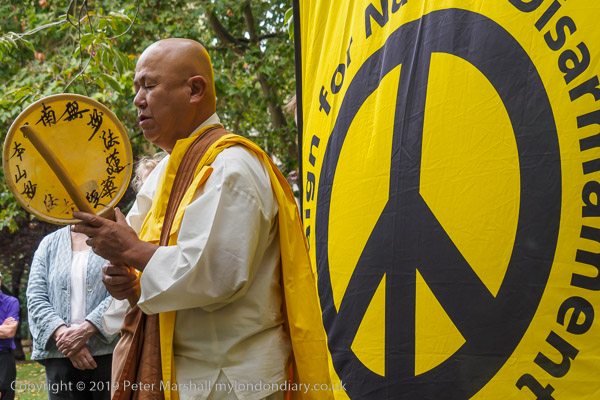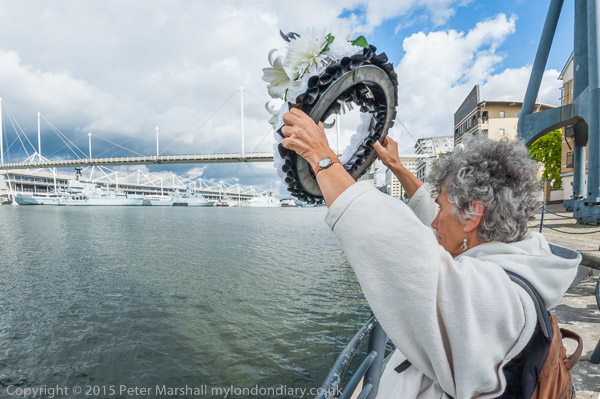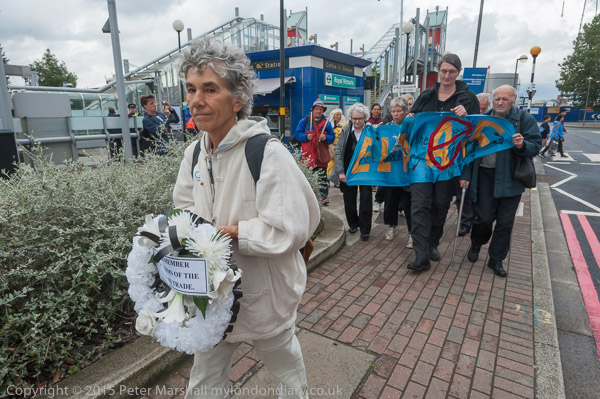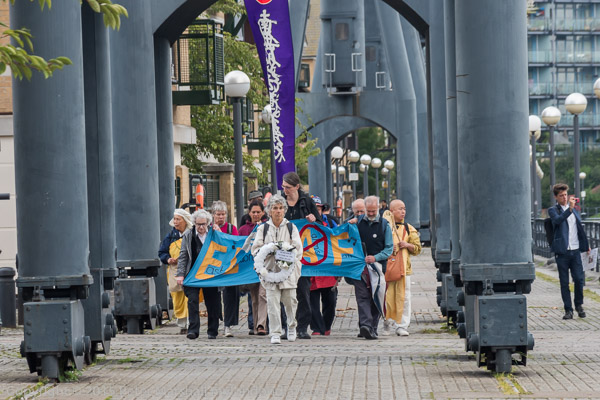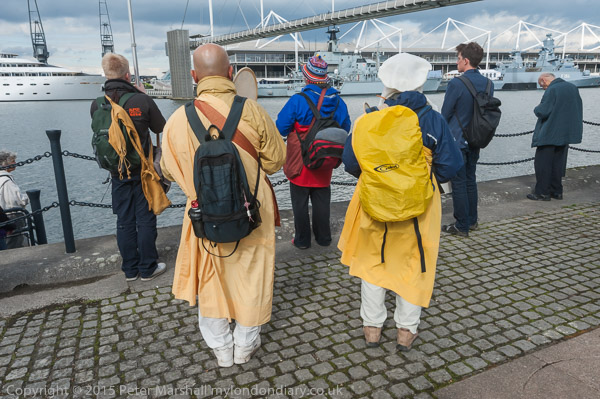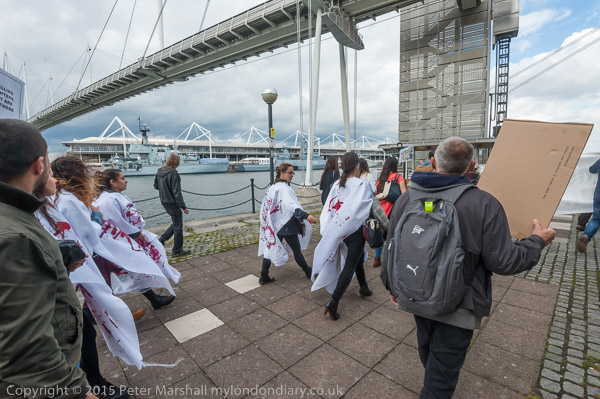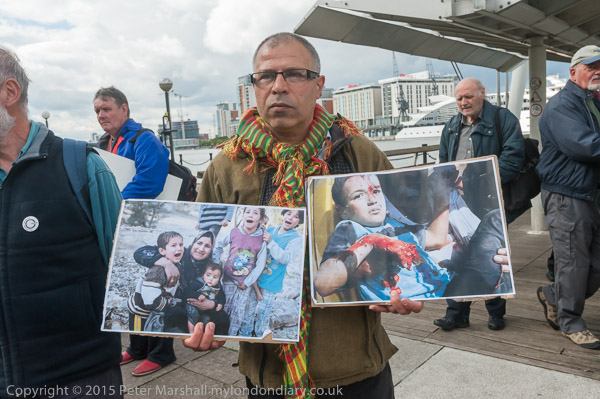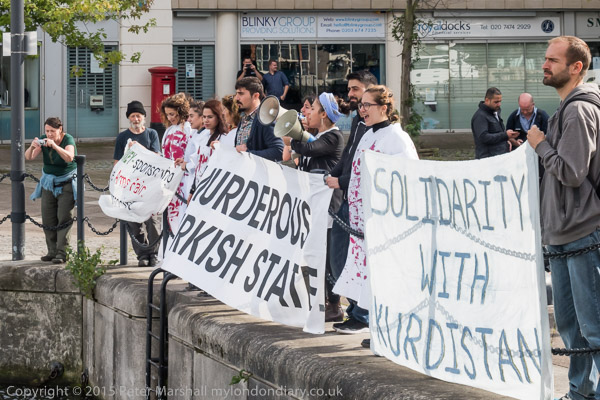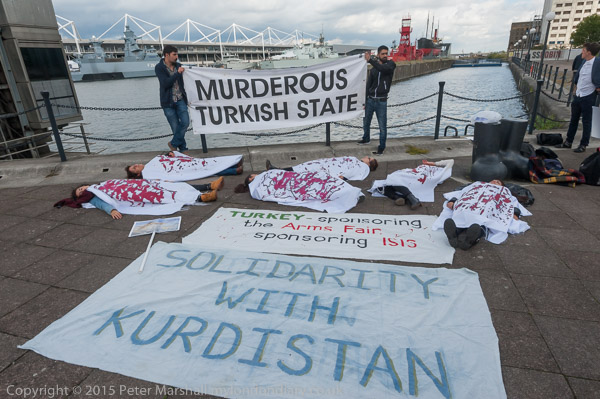Battersea Park, Flour Mill and Somerset Estate continues my walk on Friday 4th August 1989 in Battersea from the previous post, The Raven, Villas, Mansion Flats & A Bridge. The walk began with Council flats, Piles of Bricks, A House Hospital and Brasserie.
I’m not what was happening in Battersea Park, and perhaps I had arruved too early.
A tree close to the tent had a rather odd piece of fencing around it and I also photographed this, both with the tent and on its own, though I’ve not put that on-line. I walked on to the Peace Pagoda and took another three pctures – again not posted online, because it was rather better in colour – I think there are eleven images in the colour album for 1989.
And I still can’t tell you what was happening in the park, but here is a picture I think I took a little later before I decided to leave and continue my walk.
I returned west towards the centre of Battersea. Back in 1989 the riverside at Battersea was still lined with industry and there was no path west beside the river and I had to go back from the park along Parkgate Rd and then cross Battersea Bridge Road and walk along Battersea Church Road.
There my eye was caught by this rather odd graffiti – back then there was far less on walls in London. I couldn’t decode what the drawing on the wall was meant to represent and I still can’t. On one side of the dark box in the corner was a cartoon rabbit with two terms of affection ‘Hun’ and ‘Snoocums’ with more the more comprehendible message across its door with a heart and ‘JOSIE 4 ARNIE’. At right was an open gate and there were also some interesting shadows.
On Battersea Church Road was the still busy factory of Rank Hovis Ltd although much of the other industry including the Morgan Crucible Company had already gone and its site replaced by housing, beginning at Morgan’s Walk estate in 1984.
The mill here had begun in 1788 with an unusual horizontal windmill built by Thomas Fowler to crush linseed for the oil for paints, but a few years later became used for grinding corn and barley. Around 1825 the mill was taken down and replaced by a steam engine. The mill grew and was eventually taken over by the Mayhew family in the 1890s as Mark Mayhew Mill.
In 1914 the Mayhew’s business was bought by Joseph Rank and became run by Rank’s second son Rowland who used his father’s Hull architects Sir Alfred Gelder and Llewellyn Kitchen to reconstruct and enlarge the site. They managed to get the LCC to waive regulations on building heights to construct the largest grain silos in London so that a whole lighter full of grain could be unloaded at a time.
In 1962, Ranks acquired Hovis McDougal, becoming Rank Hovis McDougal, though by 1989 the McDougal seems to have disappeared. The mills were updated and produced up to 10 tonnes of white flour an hour, using mainly UK wheat delivered by lorry, though some came from Canada and was delivered by barge from Tilbury Docks.
The mills only finally closed around 1992, and were demolished in 1997; the site is now occupied by the tall triangle of Richard Roger’s Montevetro riverside flats, covered at some length by the Survey of London.
Across the road to the south of the road in 1989 was the very different triangle of the Dimson Hall Social Club, part of the extensive Somerset Estate begun by the GLC in 1962 and completed by the London Borough of Wandsworth. This community centre was named after GLC councillor Gladys Dimson who was the GLC housing chair from 1973-77. A colleague of Ken Livingstone, she was also involved with both Shelter and the settlement of Toynbee Hall in East London.
Currently flats on the Somerset Estate are advertised at around almost couple of a million pounds less than their near neighbours in Montevetro.
The riverside developments on the river in Battersea although often controversial do mean there is now a riverside path along virtually the whole length. Back in 1989 there was I think no access for the public between Battersea Bridge and St Mary’s Church where the next post on this walk will begin.
Flickr – Facebook – My London Diary – Hull Photos – Lea Valley – Paris
London’s Industrial Heritage – London Photos
All photographs on this page are copyright © Peter Marshall.
Contact me to buy prints or licence to reproduce.














